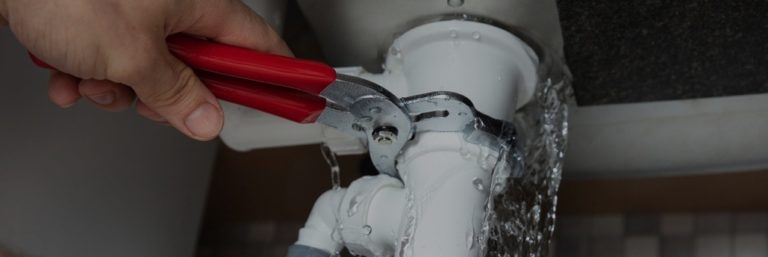Guide To Water Leak Detection In The House
Guide To Water Leak Detection In The House
Blog Article
This great article which follows involving Detecting hidden plumbing leaks is totally compelling. Read it for yourself and decide what you think about it.

Early detection of dripping water lines can reduce a potential calamity. Aside from saving you money, it will minimize the stress as well as stress. The minute you discover a leak, calling your plumber for repairs is the best service. However, some tiny water leakages may not show up. Right here are some hacks that assist if you can not spot it with your naked eyes.
1. Check Out the Water Meter
Every residence has a water meter. Examining it is a guaranteed way that aids you find leaks. For beginners, shut off all the water resources. Guarantee nobody will purge, use the tap, shower, run the washing equipment or dishwashing machine. From there, go to the meter and also watch if it will transform. Since nobody is using it, there ought to be no activities. That suggests a fast-moving leak if it relocates. Also, if you spot no changes, wait a hr or more and examine back once more. This means you might have a slow leak that could even be underground.
2. Inspect Water Usage
If you find abrupt changes, in spite of your usage being the same, it implies that you have leakages in your plumbing system. A sudden spike in your expense shows a fast-moving leakage.
On the other hand, a constant increase each month, despite having the very same practices, shows you have a sluggish leak that's also slowly intensifying. Call a plumber to extensively check your residential property, particularly if you feel a warm area on your flooring with piping beneath.
3. Do a Food Coloring Test
When it concerns water consumption, 30% originates from commodes. Examination to see if they are running appropriately. Drop flecks of food color in the tank and also wait 10 mins. If the color in some way infiltrates your bowl throughout that time without flushing, there's a leak in between the tank and bowl.
4. Asses Exterior Lines
Do not fail to remember to inspect your outdoor water lines as well. Test faucets by connecting a garden tube. Must water permeate out of the link, you have a loosened rubber gasket. Replace this and ensure all links are limited. It will certainly assist get it professionally examined and also preserved yearly if you've got a lawn sprinkler system. One small leak can waste lots of water as well as spike your water costs.
5. Assess the situation as well as evaluate
Homeowners must make it a habit to check under the sink counters as well as also inside cabinets for any bad odor or mold development. These 2 red flags indicate a leak so timely interest is called for. Doing regular inspections, even bi-annually, can save you from a major issue.
A lot more notably, if you recognize your residence is currently old, maintain a watchful eye on your heating units, pipes, pipelines etc. Look for discolorations and weakening as most devices as well as pipes have a life span. They will certainly likewise naturally wear away because of wear and tear. If you suspect leaking water lines in your plumbing system, do not wait for it to intensify. Call a specialist plumber as soon as possible so you do not end up with an awful mess in your house.
Early discovery of dripping water lines can minimize a potential disaster. Some small water leaks may not be noticeable. Inspecting it is a guaranteed method that assists you find leaks. One little leak can lose lots of water and also spike your water bill.
If you presume dripping water lines in your plumbing system, don't wait for it to escalate.
WARNING SIGNS OF WATER LEAKAGE BEHIND THE WALL
PERSISTENT MUSTY ODORS
As water slowly drips from a leaky pipe inside the wall, flooring and sheetrock stay damp and develop an odor similar to wet cardboard. It generates a musty smell that can help you find hidden leaks.
MOLD IN UNUSUAL AREAS
Mold usually grows in wet areas like kitchens, baths and laundry rooms. If you spot the stuff on walls or baseboards in other rooms of the house, it’s a good indicator of undetected water leaks.
STAINS THAT GROW
When mold thrives around a leaky pipe, it sometimes takes hold on the inside surface of the affected wall. A growing stain on otherwise clean sheetrock is often your sign of a hidden plumbing problem.
PEELING OR BUBBLING WALLPAPER / PAINT
This clue is easy to miss in rooms that don’t get much use. When you see wallpaper separating along seams or paint bubbling or flaking off the wall, blame sheetrock that stays wet because of an undetected leak.
BUCKLED CEILINGS AND STAINED FLOORS
If ceilings or floors in bathrooms, kitchens or laundry areas develop structural problems, don’t rule out constant damp inside the walls. Wet sheetrock can affect adjacent framing, flooring and ceilings.
https://www.servicemasterbyzaba.com/blog/how-to-detect-water-leakage-in-walls/

As a devoted reader on Leaking water lines, I assumed sharing that topic was really helpful. Are you aware of another person who is involved in the niche? Please feel free to share it. Thanks a bunch for your time. Come back soon.
Report this page